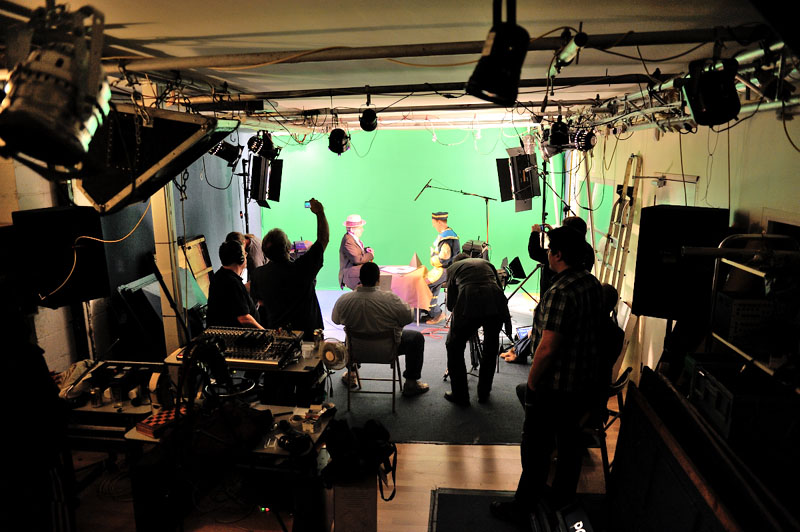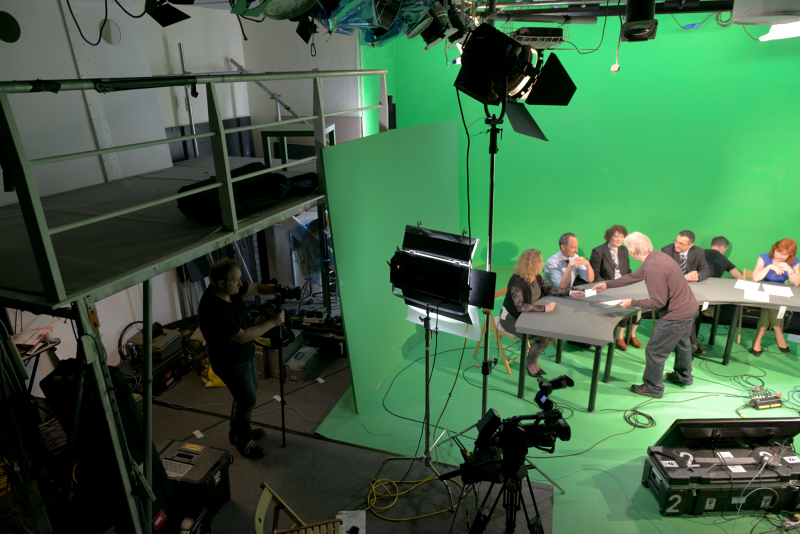Setting the Stage: Why Workflow Choice Matters
In today’s fast-paced production landscape, multi-camera workflows are essential for capturing dynamic performances, corporate presentations, educational content, and live events. Two leading methods, live-switching and post-production multi-cam editing, each demand specific timelines, teams, and approaches. Understanding their trade-offs helps specialists, freelancers, and medium‑income business owners plan shoots smarter, stay on budget, and deliver compelling results.
What Is Live‑Switching?
Live‑switching (vision mixing) involves real-time editing of multiple camera feeds during recording. A director uses a switcher to select camera angles, transitions, and overlays as the action unfolds.

Pros:
- Instant deliverables- broadcast-ready within minutes
- Minimal post-production work
- Lean crew focus: director/switcher + audio tech
Cons:
- Limited flexibility, errors are baked in
- High pressure, low room for creative adjustment
- Minimal ability to refine color or audio post-recording
What Is Multi‑Cam Editing?
In post-production multi-cam editing, each camera records independently. Editors sync, cut, and fine-tune the footage in software like Premiere Pro or DaVinci Resolve.
Pros:
- Complete editorial and visual control
- Perfect for complex pacing, color grading, and detailed audio mixing
Cons:
- Extended timelines – typically 2-4 minutes of edit per minute of raw footage
- Requires larger teams: editors, assistants, QC
- Higher storage needs and licensing costs
Real‑World Case Study
At Soundstage Studios, a recent live music session employed a hybrid approach:
- A live switch provided an hourly draft for client review
- Independent camera feeds were recorded for post-production cleanup
This strategy delivered a polished final cut within two days, combining speed with creative flexibility.
Visual Workflow Comparison
Live-Switching Workflow (Linear):
- Multi-camera capture
- Vision mixing in real time
- Minimal post-evacuation
- Same-day delivery
Post-Production Workflow (Layered):
- Multi-camera capture
- Media ingestion and syncing
- Assembly edit
- Color grade, mix audio, graphics
- Final QC
- Delivery (days to weeks later)
Comparing Timelines
| Workflow | Capture | Editing | Delivery Timeline |
| Live‑Switching | Real-time | Cleanup only (1–2 hrs) | Same day |
| Post‑Production | Capture | 2–4× runtime per hour + finishing | 1–3 weeks |
Example: A 2‑hour seminar live-switched, cleaned up, and delivered within the evening, whereas full post-production could take 16+ hours.
Performance Data & Benchmarks

- Live-switching can reduce total production man-hours by up to 60% for sub‑2‑hour shoots.
- A 60-minute multi-cam interview typically requires 12–16 hours of editing and grading.
Resource Requirements & Cost
Live-Switching:
- Key roles: vision mixer, audio engineer
- Gear: switcher, routing equipment, redundancy record-back
Multi-Cam Editing:
- Team: 1-2 editors, assistant editors, QC techs
- Gear: high-speed storage, editing suites, grading stations
Cost Insights:
- Live-switching front-loads costs during the shoot
- Post-production spreads hours across editing and finishing, adding storage and license expenses
Flexibility & Creative Control
- Live-Switching: delivers polished output fast, but locks in choices
- Post-Production: allows color/grading finesse, precise cuts, and modular audio mixing
- Hybrid: start with a live switch and refine the final version using ISO feeds
Soundstage Tip
“Always record ISO tracks alongside the live switch. You get immediate delivery, yet retain full post options.”
– Alex R.
Hybrid Workflow Strategy
To blend the benefits:
- Use a live switch for client previews
- Record all ISOs for later edits
- Set clear expectations: “preview now, polished version later”
- Select software: hardware switchers + Premiere/Resolve for post
- Reserve buffer time in the schedule (1–2 hours) for technical issues and tweaks
Decision Matrix: Choose Your Best Fit
| Scenario | Recommended Approach | Why? |
| Live concert, real-time stream | Live-Switching | Urgency, linear performance, and quick delivery |
| Corporate training/webinars | Hybrid | Immediate draft plus polished post-event version |
| Interview-heavy documentary | Post-Production | Needs pacing, B-roll integration, sound design |
| Podcast with multiple hosts | Hybrid | Structure live, cleanup in post |
Soundstage Studios Workflow Tips
At Soundstage Studios, we optimize every stage:
- Tech walkthroughs to verify camera angles and audio feeds
- Redundant recording of all sources as post-fallback
- Client review stations are on-site for immediate feedback
- Staff cross-training switcher and editor overlap improves team agility
- Built-in buffer time to handle unforeseen challenges
Choosing the Right Path for Your Studio Needs
Live-switching delivers fast, efficient results for linear, time-sensitive shoots, while post-production offers creative depth and control. A hybrid approach often provides the best of both worlds: same-day delivery with room for polish. The key to success lies in thoughtful planning of crew roles, tech redundancy, time buffers, and transparent client communication.
Take the Next Step
Ready to elevate your production with tailored live-switching or multi-cam post‑production? At Soundstage Studios, we combine experienced crews, advanced gear, and hybrid-ready workflows to ensure your vision looks great and arrives on time.
Visit us today and let’s bring your project to life.
